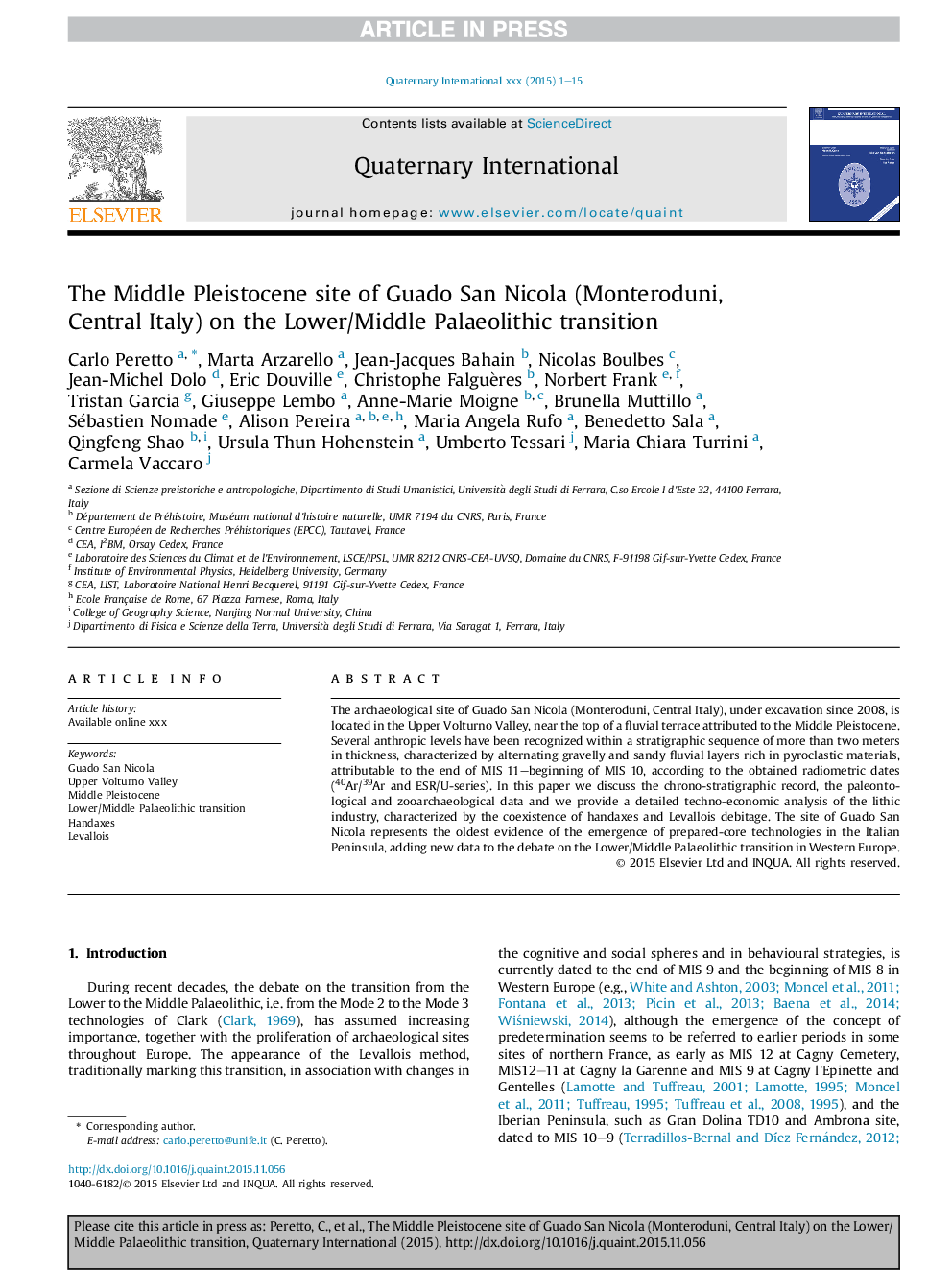| Article ID | Journal | Published Year | Pages | File Type |
|---|---|---|---|---|
| 5113854 | Quaternary International | 2016 | 15 Pages |
Abstract
The archaeological site of Guado San Nicola (Monteroduni, Central Italy), under excavation since 2008, is located in the Upper Volturno Valley, near the top of a fluvial terrace attributed to the Middle Pleistocene. Several anthropic levels have been recognized within a stratigraphic sequence of more than two meters in thickness, characterized by alternating gravelly and sandy fluvial layers rich in pyroclastic materials, attributable to the end of MIS 11-beginning of MIS 10, according to the obtained radiometric dates (40Ar/39Ar and ESR/U-series). In this paper we discuss the chrono-stratigraphic record, the paleontological and zooarchaeological data and we provide a detailed techno-economic analysis of the lithic industry, characterized by the coexistence of handaxes and Levallois debitage. The site of Guado San Nicola represents the oldest evidence of the emergence of prepared-core technologies in the Italian Peninsula, adding new data to the debate on the Lower/Middle Palaeolithic transition in Western Europe.
Keywords
Related Topics
Physical Sciences and Engineering
Earth and Planetary Sciences
Geology
Authors
Carlo Peretto, Marta Arzarello, Jean-Jacques Bahain, Nicolas Boulbes, Jean-Michel Dolo, Eric Douville, Christophe Falguères, Norbert Frank, Tristan Garcia, Giuseppe Lembo, Anne-Marie Moigne, Brunella Muttillo, Sébastien Nomade, Alison Pereira,
